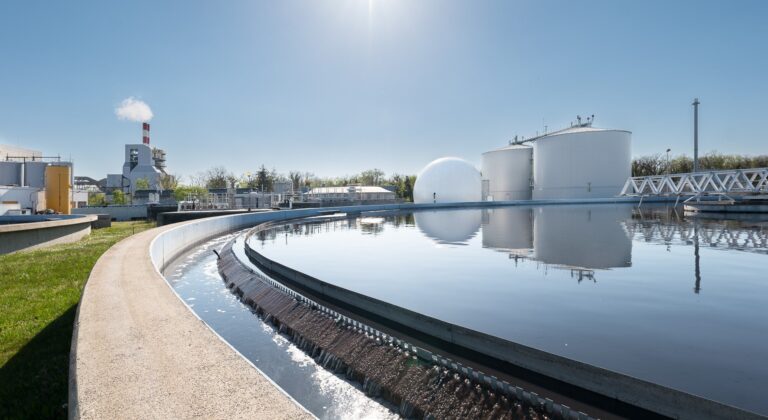Slime dewatering is a basic part of wastewater treatment processes, empowering effective expulsion of water from sludge to lessen its volume and improve removal or reuse choices. With developing ecological guidelines and expanding interest in practical arrangements, Sludge dewatering has turned into a point of convergence for enterprises and regions around the world.
What is Slop Dewatering?
Sludge dewatering is an actual cycle that isolates water from slime, creating a concentrated, semi-strong material. This interaction is commonly applied to the leftover muck from wastewater treatment plants, which comprises natural and inorganic matter, microbes, and different materials.
The essential targets of Sludge dewatering are:
Diminishing ooze volume for simpler transportation.
Limiting removal costs.
Planning ooze for advantageous reuse, like soil revision or energy age.
The Significance of Sludge dewatering
Productive Sludge dewatering mitigates the difficulties related to slop the executives. Without dewatering, shipping, and discarding untreated muck can prompt excessive expenses and ecological dangers. By bringing down the water content, dewatering empowers massive expense reserve funds and consistency with rigid natural principles.
Moreover, dewatered slime frequently has upgraded convenience in horticulture or as a natural substance in specific modern applications.
Key Techniques for Sludge dewatering
1. Centrifugation
Centrifugation utilises rapid turns to isolate water from ooze through radiating power. This strategy is great for offices with restricted space and can deal with enormous volumes of slime productively.
2. Belt Channel Presses
This broadly utilised strategy includes a mix of gravity and mechanical strain to dewater muck. Muck is put on a porous belt, where water is sifted through while the excess solids are compacted into a cake-like structure.
3. Plate and Casing Channel Presses
One of the best strategies for accomplishing high solids content, this interaction includes syphoning muck between channel plates fixed with material. After some time, water is pressed out, abandoning dry ooze cake.
4. Screw Presses
This low-energy, reduced innovation is acquiring notoriety because of its straightforwardness and effectiveness. A screw press utilises a gradually pivoting screw to minimise ooze, removing water simultaneously.
5. Drying Beds
For more modest offices, drying beds give a practical and straightforward strategy. Slime is spread on sand or rock beds and permitted to dry under regular daylight; however, this strategy is climate subordinate.
Uses of Dewatered Muck
Dewatered muck has assorted applications, especially when it fulfils quality guidelines for safe reuse:
Farming: Treated and dewatered muck can be utilised as a supplement-rich manure.
Development: Integrating dewatered muck into building materials like blocks or concrete is another practical option.
Energy Creation: Dewatered ooze with high natural substance can be changed over into biogas or utilised as fuel in waste-to-energy plants.
Benefits of Sludge dewatering
Cost Reserve funds
Diminishing slime volume straightforwardly brings down transportation and removal costs.
Natural Advantages
Dewatering limits leachate age during removal, diminishing the gamble of water contamination.
Flexibility
Progressed dewatering frameworks take special care of different businesses, for example, civil wastewater, food handling, synthetic assembling, and mining.
Challenges in Slop Dewatering
While the advantages are clear, sludge dewatering processes likewise face specific difficulties:
High Energy Expenses: Progressed dewatering strategies, like centrifugation, require critical energy input.
Compound Utilisation: Many cycles include polymers or different synthetics to upgrade productivity, which can present ecological worries.
Functional Intricacy: Appropriate support and a gifted workforce are important to guarantee reliable execution of dewatering gear.
Arising Patterns in Sludge dewatering
Computerisation and simulated intelligence mix
Computerised frameworks outfitted with sensors and artificial intelligence calculations are assisting ventures with advancing the dewatering system, guaranteeing consistency and lessening manual intercession.
Manageable Innovations
There is a developing accentuation on energy-productive strategies and frameworks that limit compound use to decrease the generally speaking ecological impression of slop the board.
Roundabout Economy
More businesses are investigating ways of changing over dewatered ooze into important assets, building up the standards of the round economy.
Choosing the Right Dewatering Arrangement
Picking the ideal dewatering arrangement relies upon a few variables:
Slope Attributes: Structure, volume, and water content.
Space Accessibility: A few innovations require critical actual space.
Cost Limitations: Beginning speculation and functional expenses.
End Use: Wanted results, like landfill removal or asset recuperation.
For customised proposals, counsel an accomplished supplier having some expertise in Sludge dewatering .
End
Sludge dewatering is a fundamental cycle in supportable wastewater management, offering financial, ecological, and functional advantages. With inventive innovations and ecologically cognisant practices, ventures can change muck from a loss result into an important asset.
To find out about “Sludge dewatering ” arrangements or examine the best framework for your requirements, consider investigating trusted assets and suppliers in the field.

